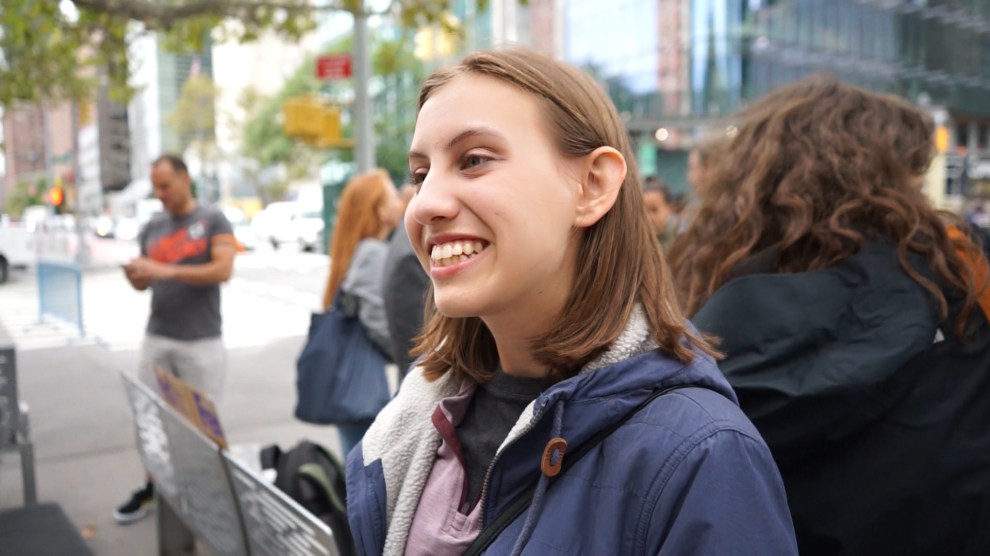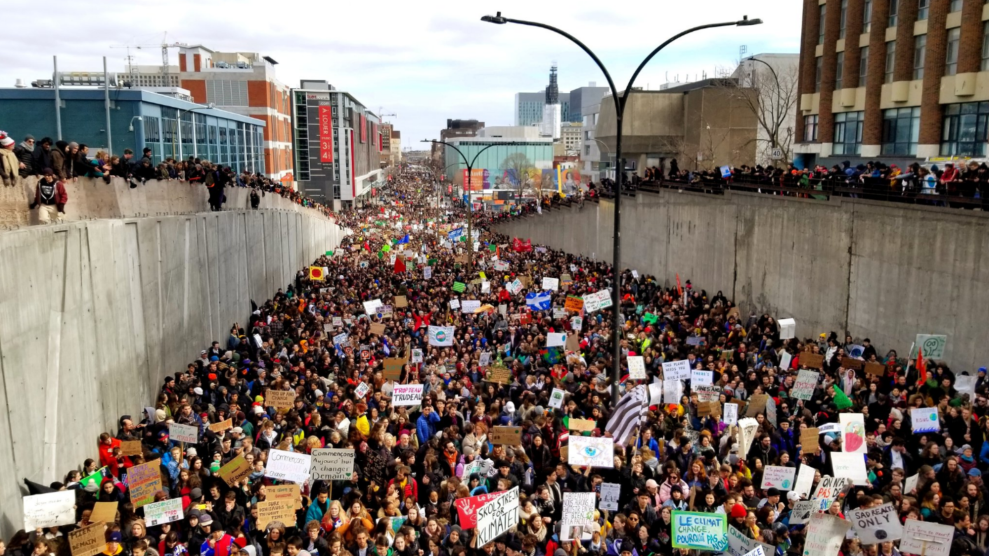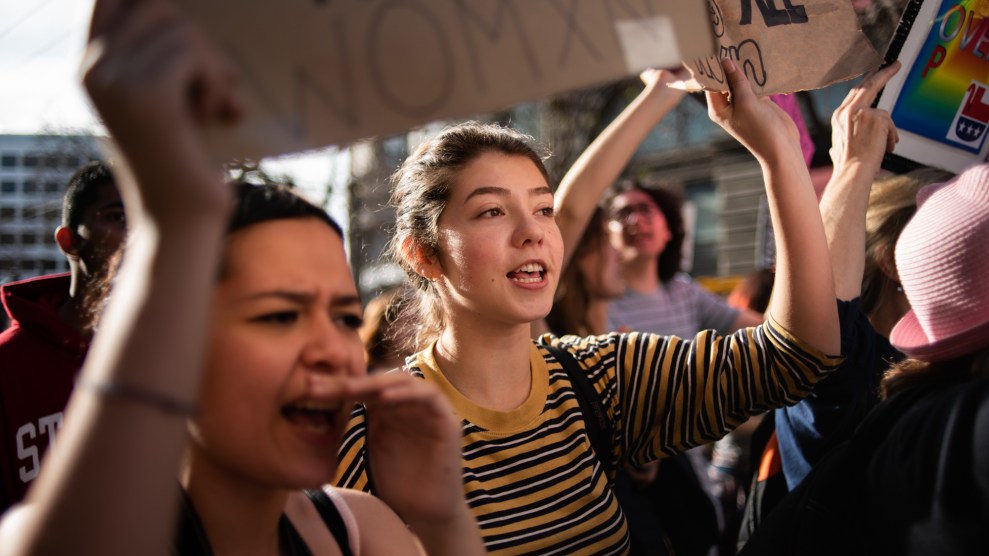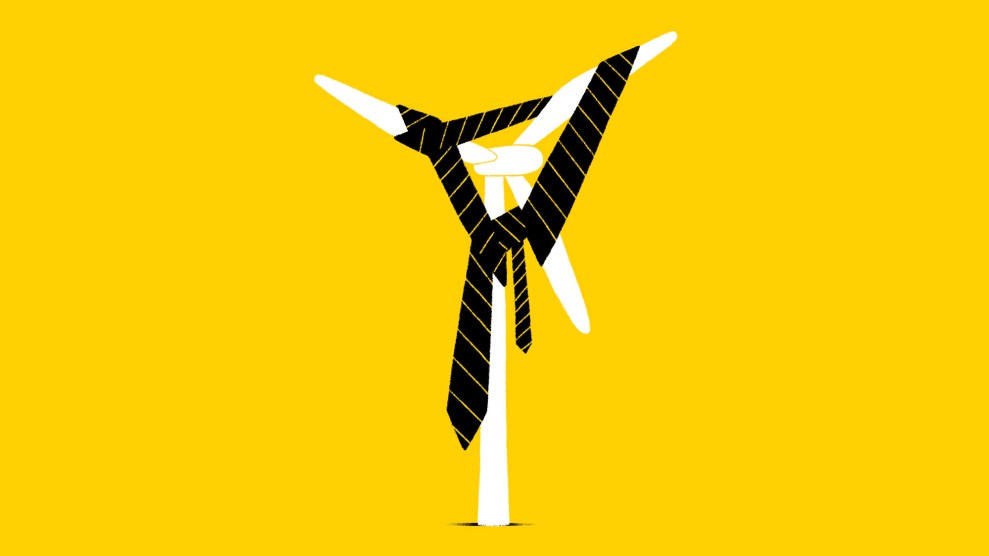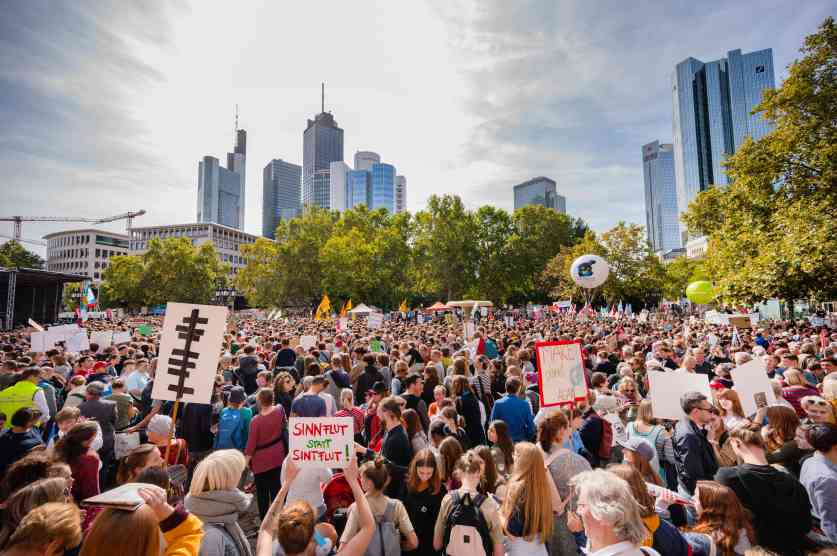
Protestors fill the streets of Frankfurt, Germany for the World Climate Strike.Andreas Arnold/Zuma
In a remarkable display of global collective action, hundreds of thousands of people around the world skipped school and work on Friday to protest the lack of meaningful governmental action against climate change.
The Global Climate Strike, a youth-led movement that has partnered with environmental organizations around the world, scheduled the strike to take place three days before the United Nations 2019 Climate Action Summit. The protests began in Australia, where an estimated 100,000 people marched in Melbourne, with 80,000 more marching in Sydney and 30,000 in Brisbane, CNN reports. As Friday dawned in time zones across the world, cities from Mumbai to Nairobi to Berlin joined in what is expected to be the largest day of climate demonstrations in history.
Greta Thunberg, the 16-year-old Swedish activist who first inspired students to skip school to protest climate change in August 2018, will join protestors in New York City, whose public school students were excused from class Friday and encouraged to join in the march.
2018 | 2019 pic.twitter.com/zH0vNClPRQ
— James Shield (@jshield) September 20, 2019
In March, Mother Jones environmental reporter Rebecca Leber wrote about what is driving young people like Thunberg to take climate action:
These young people compose the first generation that bears little responsibility for the 410 parts per million concentration of carbon in the atmosphere, but will face most of the consequences from it. They’re coming of age when the window to ward off this nightmare scenario is rapidly shrinking. Many older adults have been warning for decades that “future generations” will suffer for our selfishness and inertia from continued inaction. Now, those so-called future victims are finding their voice to try and shape the agenda.
Friday’s Global Climate Strike, an extension of students’ Fridays for Future strikes around the world, is one result of the “future victims” finding their voice.
We will keep sharing images as the day unfolds:
New York, NY
Beyond belief.
This is the NYC Climate Strike. Foley Square is overflowing.
— Joshua Potash 🆘 (@JoshuaPotash) September 20, 2019
who made this it is MAGNIFICENT pic.twitter.com/s2KsXqgLdb
— Bella Mackie (@bellamackie) September 20, 2019
Washington, DC
Kindergarteners from @MarieReedES marching for the #ClimateStrike today @dcpublicschools @ItsAdamsMorgan @DCist @PoPville @dclinenews #DCkidsforchange pic.twitter.com/bpN3DrEXiu
— Betsy Collins (@BetsySCollins) September 20, 2019
Melbourne, Australia
“The largest demonstration in Australian history…”#ClimateStrike pic.twitter.com/Lzgk67r2O1
— Alex Steffen (@AlexSteffen) September 20, 2019
Melbourne 2:30pm #ClimateStrike pic.twitter.com/Av7WW09Yxj
— Erin Dolan (@erin_dolan) September 20, 2019
OMG the #ClimateStrike is SO big in Melbourne. Crowd estimates coming in at 100k! pic.twitter.com/UpnQHVoB2r
— School Strike 4 Climate (@StrikeClimate) September 20, 2019
Mumbai, India
#children of #mumbai are demanding for #ClimateJustice on the streets! It's now or never.. #ClimateAction is needed.. let's #actnow .. for a safe future for all of us..#GlobalClimateStrike @GretaThunberg @FFFIndia @350 @greenpeaceindia pic.twitter.com/dDkB8ZX2hW
— Fridays for future_Mumbai 🇮🇳 (@fffmumbai1) September 20, 2019
#GlobalClimateStrike has started.. children demanding for #ClimateEmergency .. 'we want more trees!' #ActNow for their future! Join us take #ClimateAction @GretaThunberg @MumbaiMirror @350 @FFFIndia pic.twitter.com/3lmzPUNoFA
— Fridays for future_Mumbai 🇮🇳 (@fffmumbai1) September 20, 2019
Berlin, Germany
An estimated 100,000 people in Berlin on #ClimateStrike. Today is massive pic.twitter.com/kSS7NulTx0
— Brian Kahn (@blkahn) September 20, 2019
This is an incredible visual. pic.twitter.com/cTUyCmC8IY
— Chris Hayes (@chrislhayes) September 20, 2019
#klimastreik #fridaysforfuture Berlin Brandenburger Tor. Klares Zeichen an die Politik!! pic.twitter.com/aIPufbGunb
— David Croyé (@DavidCroye) September 20, 2019
Nairobi, Kenya
It's a pleasant scene here on the streets of Nairobi. People walked out of their offices & homes to support the #GlobalClimateStrike & fight for the future. #ClimateStrikeKE now on Harambee Avenue chanting #ClimateJusticeNow #deCOALonize pic.twitter.com/rNacFqP5Xj
— deCOALonize Kenya (@deCOALonize) September 20, 2019
Dublin, Ireland
Beautiful #ClimateStrike footage from Dublin. 💚
We are all connected. pic.twitter.com/KjBPJMzyOp
— Mike Galsworthy (@mikegalsworthy) September 20, 2019
Islamabad, Pakistan
Huge crowds at the Islamabad #ClimateMarch. There is suddenly a climate movement in Pakistan. #ClimateActionNow pic.twitter.com/jp9jHusiAL
— Ammar Rashid ☭ (@AmmarRashidT) September 20, 2019
Paris, France
The Paris strikes are fierce & powerful ✊✊✊ #ClimateStrike pic.twitter.com/5OWnbCd6ZX
— 350.org Europe (@350Europe) September 20, 2019
And everyone started taking to the streets in #Paris for the #globalclimatestrike #fridaysforfuture #20septembre #YouthStrike4Climate pic.twitter.com/Wmb3QOXoRI
— Elisa Miebach (@elisamiebach) September 20, 2019

